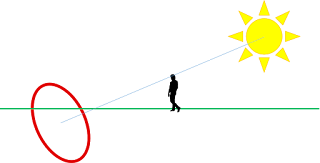Haha, so I started writing a blog post on Friday about the rain we would have this weekend. I was going to write about the potential of this rain causing thunderstorms that would delay the
Payson Temple Cultural Celebration held in Provo Utah. Well, I never finished the post because I was working on other projects, and never published a warning. So sorry for not saying anything about the storm on my blog yesterday. But, I do have proof from text messages that I told several people about the possibility of rain during the event.
Needless to say, the event was delayed almost an hour due to the thunderstorm. A look at the daily radar shows at 6:00 a thunderstorm passing approaching Provo. It was accompanied by frequent lightning strikes (mostly cloud to cloud as far as I could tell), and large rain drops.
We should be glad this event wasn't delayed due to tornadoes. There were two in Utah near the four corners...

Anyways, my brothers performed in the celebration, an outside event at Lavell Edwards Stadium celebrating the new temple in Payson (
KSL Story). It seems like whenever someone chooses a date for an outdoor event months in advance, they automatically change the course of the weather. Saturday evening was a wet one with 0.86 inches of rain falling in the hour the event was supposed to occur.
By 6:00 PM, when we were walking to the stadium, a large thunderstorm was moving from the south and was getting bigger. We managed to find refuge in a Wendy's right before the rain started to downpour. Our friends came a little later and weren't so lucky. They were soaked when they met us for dinner. The roads had turned to rivers and people were running around with umbrellas and trash bags over their heads.
The day started out warm and mostly sunny with convection developing over the mountains.
Later in the day, visible satellite image at 7:30 mountain time shows the explosive growth of thunderstorms...
The 5:00 HRRR sounding analysis at KPVU (Provo Airport) shows increasing CAPE throughout the day due to surface heating and lower level moistening. CAPE is the amount of energy available to raise parcels of air and is indicated by the area of the black hashing on the skew-t diagram. Quickly rising air leads to cloud and thunderstorm formation.
Then just three hours later, after the performance had resumed, the potential of thunderstorm growth was reduced...
Observations at the Eyring Science Center show the 0.86 inches in one hour and a 25 F degree temperature drop as the storm passed.
After the storm passed there were some beautiful mammatus clouds hanging over the stadium.
It was a smart move of the Celebration leaders to temporarily suspend the event while the storm passed. A lightning strike in a crowded stadium would have been a catastrophe. After the storm safely passed, the show went on. It was a fun celebration and I'm glad those youth had the chance to perform what they had spent months practicing.
In other news, hurricane Blanca will make landfall on the Baja Peninsula...























































